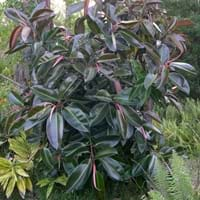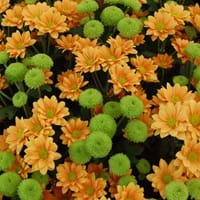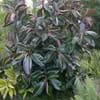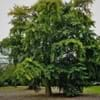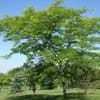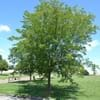Life Span
Perennial
Perennial
Origin
Southern Asia, Southeastern Asia, India, Nepal
Asia, Northeastern Europe
Types
not available
Garden mum, Tricolor chrysanthemum, Indian chrysanthemum, Corn marigold
Number of Varieties
Not Available
Habitat
agricultural areas, Along Railroads, Coastal Regions, Forests, Roadsides, Scrubs, Suburban areas
By seashore, Grassland, Thickets
USDA Hardiness Zone
10-11
3-9
Sunset Zone
H1, H2, 16, 17, 19, 20, 21, 22, 23, 24
1a, 1b, 2a, 2b, 3a, 3b, 4, 5, 6, 7, 8, 9, 10, 11, 12, 13, 14, 15, 16, 17, 18, 19, 20, 21, 22, 23, 24
Habit
Upright/Erect
Clump-Forming
Flower Color
Not Available
Burgandy, Green, Lavender, Orange, Pink, Purple, Red, Salmon, White, Yellow
Flower Color Modifier
Bicolor
Bicolor
Fruit Color
Yellow, Yellow green
Brown, Not Available
Leaf Color in Spring
Red, Dark Green, Crimson
Dark Green
Leaf Color in Summer
Red, Dark Green, Crimson
Green, Sea Green
Leaf Color in Fall
Red, Dark Green, Crimson
Green, Sea Green
Leaf Color in Winter
Red, Dark Green, Crimson
Not Available
Leaf Shape
Elliptic to oblong
Ovate
Plant Season
Spring, Summer, Fall, Winter
Fall, Summer
Sunlight
Full Sun, Partial Sun, Partial shade
Full Sun
Type of Soil
Loam, Sand
Well drained
The pH of Soil
Acidic, Neutral, Alkaline
Neutral, Slightly Acidic
Soil Drainage
Well drained
Well drained
Bloom Time
Not Available
Early Fall, Fall, Late Fall, Late Summer
Tolerances
Not Available
Not Available
Where to Plant?
Ground
Ground
How to Plant?
Seedlings, Vegetative Reproduction
Grafting, Seedlings, Transplanting
Plant Maintenance
Medium
Medium
Watering Requirements
Keep ground moist, Requires a lot of watering
Form a Soil ring to water efficiently, Over-watering can cause leaf problems or root diseases, Prefer drip-irrigation instead of Over-head watering, Requires regular watering, Use Mulches to help prevent water loss during hot and windy weather
In Summer
Lots of watering
Lots of watering
In Spring
Moderate
Moderate
In Winter
Average Water
Average Water
Soil pH
Acidic, Neutral, Alkaline
Neutral, Slightly Acidic
Soil Type
Loam, Sand
Well drained
Soil Drainage Capacity
Well drained
Well drained
Sun Exposure
Full Sun, Partial Sun, Partial shade
Full Sun
Pruning
Prune for shortening long shoots
Cut or pinch the stems, Prune for shortening long shoots, Prune if you want to improve plant shape, Prune in summer, Prune to control growth, Remove shoots
Fertilizers
don't fertilize in winter
All-Purpose Liquid Fertilizer
Pests and Diseases
Mealybugs, Red blotch, Scale, Spider mites, Yellow Leaves
Aphids, Botrytis head rot, Caterpillars, Cutworms, Powdery mildew, Rhizoctonia stem rot, Slugs, Spider mites, Thripes
Plant Tolerance
Not Available
Drought
Flowers
Insignificant
Yes
Flower Petal Number
Not Available
Single
Foliage Texture
Bold
Medium
Foliage Sheen
Glossy
Matte
Attracts
Not Available
Butterflies
Allergy
Asthma, breathing problems
Asthma, Eczema, Hay fever, Inflammation to sinuses or hives, Skin rash
Aesthetic Uses
Showy Purposes
Beautification, Bouquets, Showy Purposes
Beauty Benefits
Not Available
Not Available
Environmental Uses
Air purification, soil erosion prevension on hill slopes
Air purification
Medicinal Uses
Not Available
Chest pain, Diabetes, Headache, High blood pressure, Swelling
Part of Plant Used
Latex
Leaves
Other Uses
Making rubber, Making tyres
Employed in herbal medicine, Used as Ornamental plant
Used As Indoor Plant
Yes
No
Used As Outdoor Plant
Yes
Yes
Garden Design
Container, Feature Plant, Houseplant, Shade Trees, Tropical
Not Available
Botanical Name
FICUS elastica
Chrysanthemums
Common Name
Rubber Plant
Chrysanths
In Hindi
रबड़ का पौधा
Chrysanthemums
In German
Ficus elastica
Chrysanthemen
In French
Ficus elastica
Chrysanthèmes
In Spanish
ficus
Crisantemos
In Greek
ελαστικός φίκος
χρυσάνθεμα
In Portuguese
fábrica de borracha
Crisântemos
In Polish
gumy roślin
Chryzantemy
In Latin
Flexilis herba
Chrysanthemums
Phylum
Tracheophyta
Magnoliophyta
Class
Magnoliopsida
Magnoliopsida
Family
Moraceae
Asteraceae
Genus
Ficus
Chrysanthemum
Clade
Angiosperms, Eudicots, Rosids
Not Available
Subfamily
Not Available
Not Available
Number of Species
Not Available
Season and Care of Ficus Elastica and Chrysanthemum
Season and care of Ficus Elastica and Chrysanthemum is important to know. While considering everything about Ficus Elastica and Chrysanthemum Care, growing season is an essential factor. Ficus Elastica season is Spring, Summer, Fall and Winter and Chrysanthemum season is Spring, Summer, Fall and Winter. The type of soil for Ficus Elastica is Loam, Sand and for Chrysanthemum is Well drained while the PH of soil for Ficus Elastica is Acidic, Neutral, Alkaline and for Chrysanthemum is Neutral, Slightly Acidic.
Ficus Elastica and Chrysanthemum Physical Information
Ficus Elastica and Chrysanthemum physical information is very important for comparison. Ficus Elastica height is 180.00 cm and width 90.00 cm whereas Chrysanthemum height is 2.50 cm and width 1.50 cm. The color specification of Ficus Elastica and Chrysanthemum are as follows:
Ficus Elastica flower color: Not Available
Ficus Elastica leaf color: Red, Dark Green and Crimson
Chrysanthemum flower color: Burgandy, Green, Lavender, Orange, Pink, Purple, Red, Salmon, White and Yellow
- Chrysanthemum leaf color: Dark Green
Care of Ficus Elastica and Chrysanthemum
Care of Ficus Elastica and Chrysanthemum include pruning, fertilizers, watering etc. Ficus Elastica pruning is done Prune for shortening long shoots and Chrysanthemum pruning is done Cut or pinch the stems, Prune for shortening long shoots, Prune if you want to improve plant shape, Prune in summer, Prune to control growth and Remove shoots. In summer Ficus Elastica needs Lots of watering and in winter, it needs Average Water. Whereas, in summer Chrysanthemum needs Lots of watering and in winter, it needs Average Water.
